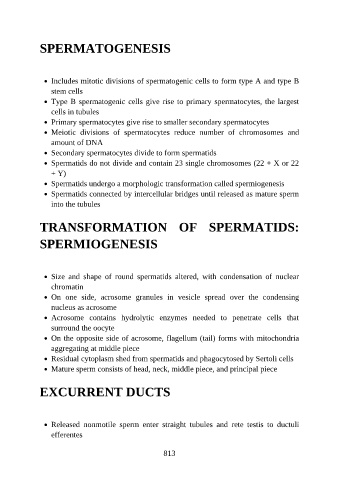Page 814 - Atlas of Histology with Functional Correlations
P. 814
SPERMATOGENESIS
Includes mitotic divisions of spermatogenic cells to form type A and type B
stem cells
Type B spermatogenic cells give rise to primary spermatocytes, the largest
cells in tubules
Primary spermatocytes give rise to smaller secondary spermatocytes
Meiotic divisions of spermatocytes reduce number of chromosomes and
amount of DNA
Secondary spermatocytes divide to form spermatids
Spermatids do not divide and contain 23 single chromosomes (22 + X or 22
+ Y)
Spermatids undergo a morphologic transformation called spermiogenesis
Spermatids connected by intercellular bridges until released as mature sperm
into the tubules
TRANSFORMATION OF SPERMATIDS:
SPERMIOGENESIS
Size and shape of round spermatids altered, with condensation of nuclear
chromatin
On one side, acrosome granules in vesicle spread over the condensing
nucleus as acrosome
Acrosome contains hydrolytic enzymes needed to penetrate cells that
surround the oocyte
On the opposite side of acrosome, flagellum (tail) forms with mitochondria
aggregating at middle piece
Residual cytoplasm shed from spermatids and phagocytosed by Sertoli cells
Mature sperm consists of head, neck, middle piece, and principal piece
EXCURRENT DUCTS
Released nonmotile sperm enter straight tubules and rete testis to ductuli
efferentes
813

